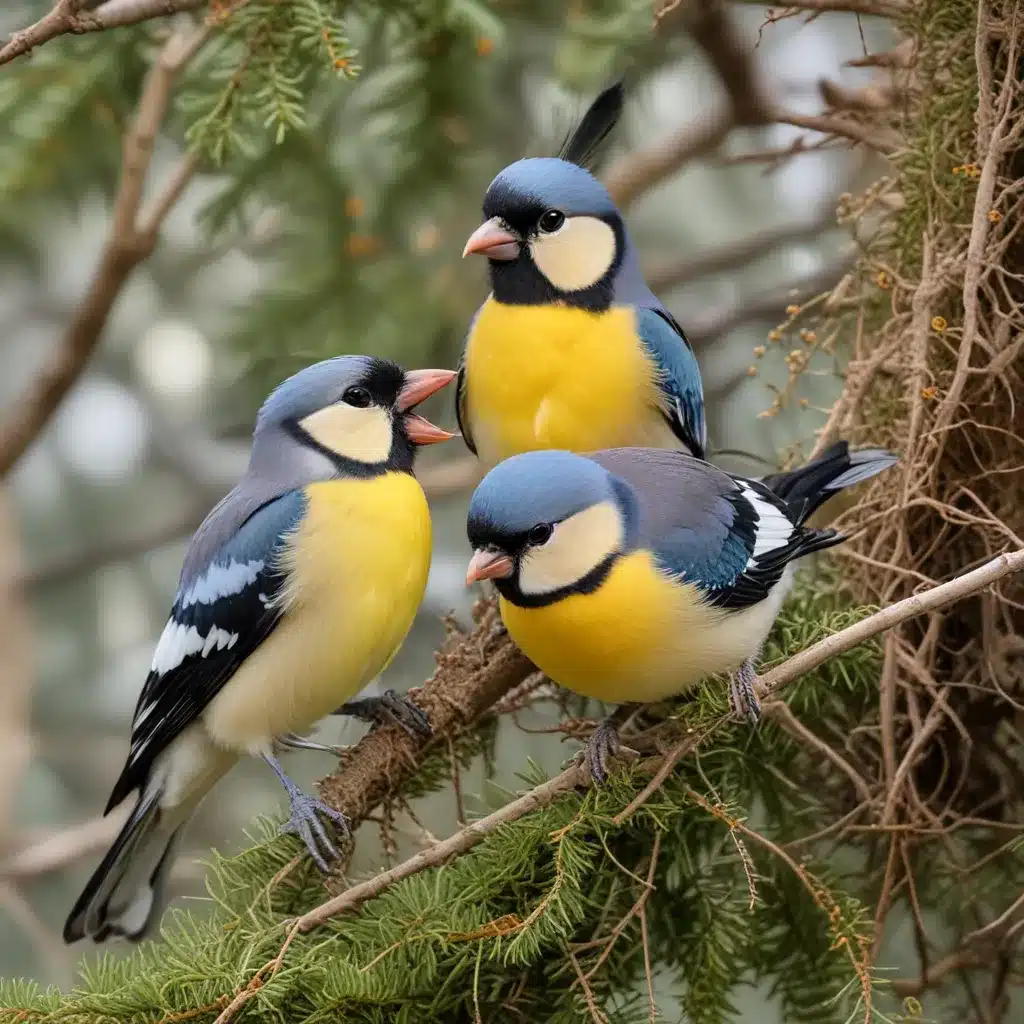
Avian Behavior and Cognition
As an experienced avian caretaker, I know that birds are complex, intelligent creatures with rich social lives and fascinating behavioral patterns. From the intricate flock dynamics of parrots to the ingenious foraging strategies of chickens, our feathered friends exhibit a remarkable array of cognitive and communicative abilities.
Birds are highly social animals, and their flock interactions are a key component of their overall well-being. Within a flock, there is a delicate hierarchy and intricate system of communication, with individuals constantly vying for resources, defending territories, and strengthening social bonds. Understanding these dynamics is crucial when providing enrichment, as activities that disrupt the natural order or cause undue stress can have negative consequences.
Equally important is recognizing the innate foraging behaviors of different bird species. In the wild, birds spend a significant portion of their day searching for, procuring, and consuming food. This foraging drive is a fundamental part of their evolutionary heritage and a critical aspect of their overall health and happiness. Providing opportunities for birds to engage in these natural foraging behaviors is a cornerstone of any successful enrichment program.
Environmental Enrichment for Birds
Enriching the environments of captive birds is essential to promoting their physical and psychological well-being. By carefully designing habitats, incorporating sensory stimuli, and presenting cognitive challenges, we can encourage natural behaviors, reduce stress, and enhance the overall quality of life for our feathered companions.
Habitat Design
The physical environment plays a crucial role in avian enrichment. Ensuring that enclosures or aviaries offer a variety of perches, substrates, and hiding spots can encourage natural behaviors like climbing, hopping, and nesting. Incorporating elements like branches, ropes, and ladders can also provide opportunities for exploration and exercise.
Sensory Stimulation
Engaging a bird’s senses is another key aspect of enrichment. Introducing novel sounds, such as recordings of conspecific vocalizations or nature soundscapes, can stimulate their auditory perception and elicit natural responses. Visually engaging items, like mirrors, colorful toys, or even videos of moving objects, can capture a bird’s attention and spark curiosity.
Cognitive Challenges
Providing cognitive stimulation is essential for maintaining a bird’s mental well-being. Puzzles, foraging toys, and other manipulative devices challenge birds to problem-solve and use their natural problem-solving abilities. This not only prevents boredom but also helps to develop their cognitive skills and strengthen their adaptability.
Benefits of Enrichment
Implementing a comprehensive enrichment program for captive birds can yield a multitude of benefits, both physical and psychological.
Physical Health
Enrichment activities can have a profound impact on a bird’s physical well-being. By reducing stress and promoting natural behaviors, enrichment can lead to improved overall health, increased fitness, and a stronger immune system. Additionally, activities that encourage movement and exercise can enhance cardiovascular function and muscle tone, contributing to the bird’s long-term physical resilience.
Psychological Well-being
The psychological benefits of enrichment are equally significant. Engaging in foraging, problem-solving, and social interactions can help alleviate boredom, decrease the likelihood of developing stereotypic behaviors, and foster a more positive emotional state. By providing birds with opportunities to express their natural behaviors, we can support their overall psychological well-being and improve their quality of life in captivity.
Implementing Enrichment Programs
Designing and implementing a successful avian enrichment program requires a holistic approach that considers the unique needs and characteristics of each bird species.
Assessing Individual Needs
Before introducing any enrichment activities, it’s crucial to carefully assess the individual needs and preferences of the birds in your care. Factors like species, age, and personality can all influence a bird’s response to different types of enrichment. Closely monitoring their behaviors and reactions can help you tailor your approach to ensure maximum engagement and positive outcomes.
Enrichment Strategies
One of the most effective ways to enrich the lives of captive birds is by providing foraging opportunities. This can involve hiding food in various substrates, such as shredded paper or corn husks, or presenting treats in puzzle feeders that challenge the bird’s problem-solving skills. Manipulative toys, like chewable wooden blocks or textured beads, can also stimulate a bird’s natural curiosity and dexterity.
Encouraging social interactions can be another valuable enrichment strategy, particularly for highly social species. Introducing new birds, supervised playdates, or even visual and auditory cues from neighboring flocks can help fulfill a bird’s innate need for companionship and communication.
Conservation and Welfare Implications
The benefits of avian enrichment extend beyond the individual bird, as they can have far-reaching implications for conservation and welfare efforts.
Captive Populations
In captive breeding programs, enrichment has been shown to improve breeding success, as birds are better able to express their natural behaviors and experience reduced stress. This, in turn, can enhance the overall health and genetic diversity of captive populations, increasing the chances of successful reintroduction into the wild.
Wild Populations
Enrichment principles can also be applied to the preservation of wild bird populations. By supporting habitat conservation and promoting ecotourism initiatives that allow people to observe birds in their natural environments, we can raise awareness and foster a deeper appreciation for the intricate behaviors and cognitive abilities of our feathered friends.
At Mika Birds Farm, we believe that providing enrichment for our avian residents is not only a moral obligation but also a crucial aspect of their overall well-being. By incorporating a diverse array of foraging opportunities, sensory stimuli, and cognitive challenges, we strive to create an environment that allows our birds to thrive and express their natural behaviors.
Through our ongoing commitment to avian enrichment, we hope to not only enhance the lives of our captive birds but also inspire others to adopt similar practices, ultimately contributing to the conservation and welfare of birds everywhere. By flocking together and embracing the power of enrichment, we can ensure that our feathered friends continue to soar with joy and vitality.


